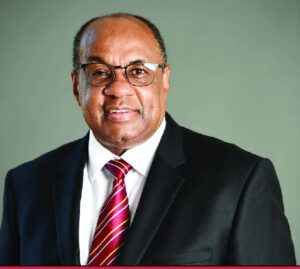
By:Megameno Shinana
The Bank of Namibia (BoN) is expected to increase its repo rate come 30 November, to play catch up with the South African Reserve Bank (SARB) which has hiked the rate by 7%, making borrowings more expensive.
The repo rate increase of 75 basis points in South Africa will come into effect today.
Economists have advised that the risk of continuing with an aggressive (i.e., front-loading) rate hiking cycle in South Africa and Namibia by implication is that monetary policy becomes restrictive for an economy not experiencing demand-pull inflationary pressures and having numerous domestic economic growth challenges.
The BoN’s Monetary Policy Committee (MPC) decided to hike the repo rate by 75bps in October to 6.25%.
They have also said that the implication is that the rate hiking cycle in South Africa and Namibia could come to an end by early 2023.
Presently in South Africa, the repo rate has now scaled much higher than where it used to be pre-pandemic.
The repo rate is a monetary policy tool used by central banks right across the world to control inflation, but its effect has been put to question in Namibia.
According to Simonis Storm, African central banks have been quite aggressive in their key policy interest rate hikes during 2022, except Angola which has cut interest rates, and Tanzania and Zambia keeping their policy rates unchanged.
“By the end of September 2022, 44 African countries out of a total of 54 recorded inflation rates above 5%, of which 22 African countries had double-digit inflation rates ranging from 10.0% to 37.2% (this range excludes the extreme of 280% in Zimbabwe),” said Simonis Storm.
“Inflationary pressures in Sub-Saharan Africa in recent months range from elevated oil prices, supply chain pressures, high food prices (exacerbated by droughts, floods and insect infestations in some countries) and elevated commodity prices,” said the wealth management firm.
Angola’s Kwanza has appreciated by about 30% against the US dollar in 2022, making it one of the world’s best-performing currencies at the moment.
For other African countries, currency weakness has been one of the factors leading to interest rate hikes as inflation is primarily driven by supply-side factors.
“Increasing rates to improve carry trade returns (which are affected by interest rate differentials between countries) and limit Rand weakness has been frequently cited by ourselves as a mechanism to indirectly contain inflation,” Simonis Storm said.
In the meantime, the SARB has revised the growth projections of South Africa which is currently battling crippling power outages amidst a highly charged political climate ahead of the ruling African National Congress’ national elective conference in December 2022.
At the back of hopes of economic growth in Namibia, the bank in South Africa now expects GDP growth of a meagre 1.8% this year, which is down from its September forecast of a 1.9% expansion.
The bank has also cut the growth estimates to 1.1% from 1.4% for the 2023 financial year due to an expected worsening of the power situation there.
The lack of adequate electricity is expected to eat into 0.6% of South Africa’s GDP growth next year before rising to 1.4%, in 2024, down from the 1.7% forecast in September.









Comments